Engineering for kids can be fun! And colorful! Building with toothpicks is a classic kid’s engineering project, today we are scaling it up by building Skewer Structures. Using bamboo skewers in lieu of toothpicks means these structures get big FAST and are relatively rigid. If you’ve been itching to try an engineering project with kids keep it simple and try using these two household items you probably already have on hand.
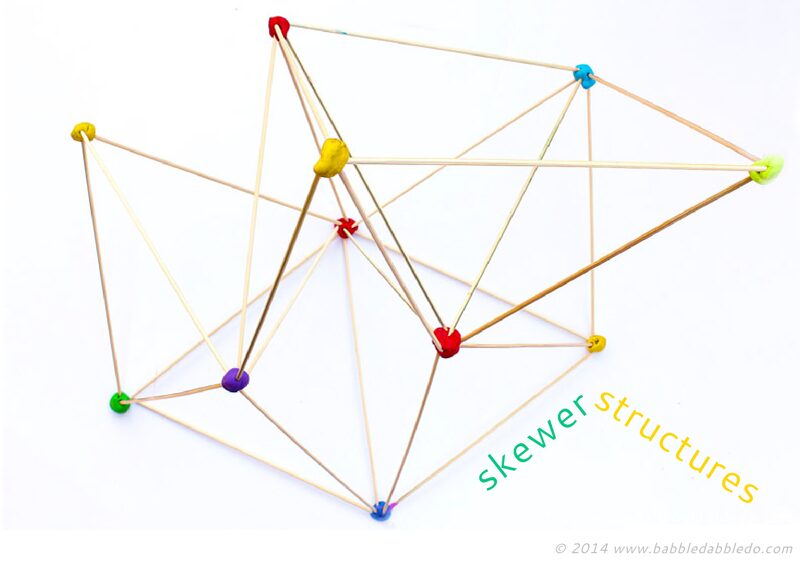
I recently polled readers to find out what projects you want to see more of here on Babble Dabble Do and was wholly impressed with the number of you that asked for more engineering for kids. That made my architectural loving heart skip a beat! I mean I geek out at this stuff but I loved hearing that other parents and educators are as excited about hands-on engineering projects for kids as I am.
Certainly the STEAM movement is helping people see why learning about engineering principles is so important for kids. To me, hands-on building projects are the best way to learn how things work. You can do all the reading you want in a book but putting those ideas into practice really solidifies concepts.
This post contains affiliate links.
Engineering for Kids: Skewer Structures
 Materials
Materials
- 12″ long Bamboo Skewers
I snip the sharp tip off the ends.
- Our go-to CLAY for everything
A note on the clay: We used colorful non-hardening clay for this project but any clay should work. Here are a couple other options to try if you have them on hand: Air Dry Clay, Sculpting Clay, play dough
Instructions
- Step One Break off chunks of clay and shape them into ½” to ¾’ balls. You can do this either as you work or prior to starting.
- Step Two Build! Use the clay balls at the joints between the skewers. I recommend starting with a triangular shape but you can be more free form.
Note: As the clay hardens and dries the structure will become more brittle. Either consider this an exercise to be completed and cleaned up OR if you want to keep it for a little while I recommend building it on a tray or board so that you can move it around easily.
That’s it! The higher and more complex the structure the more you will have to adjust/press the joints together.
My kids and I each built a structure and then I combined them all into one mega- structure!
One thing I love about working with kids is seeing how they interpret the materials at hand. My 5-year-old daughter decided to roll out the clay into flat pieces and them wrap it around the skewers to add a decorative element. She was more included to make a colorful simple structure while my 7-year-old son was interested in building big and quick.
Looks Like
Gustave Eiffel. As structural engineers go he is probably the world’s only household name, am I right? And that’s because Gustave Eiffel designed one the world’s most beloved and recognizable landmarks: the Eiffel Tower in Paris. It was built for the 1889 Paris World’s Fair. While today we are used to modern looking structurally based towers, structures like it were completely unheard of in the late 1800’s and many people were both dazzled and aghast by it. The Eiffel Tower set the precedent for sculptural, structural monuments and architecture that are so commonplace today.
Did you know that Eiffel was also responsible for engineering the structure within the Statue of Liberty? The breadth and diversity of his career is amazing, besides the two landmarks mentioned above he designed numerous bridges and a system of locks for the French designed (and never built) Panama Canal. One of the things I find most interesting about his career was his pursuit to standardize structural components, particularly with respect to bridges, kind of like a kit of parts. His contributions to engineering /architecture and world heritage rightfully make him one the world’s most beloved engineers. Since our skewer structures were part engineering, part sculptural I found them much aligned with Gustave Eiffel and his exploitation of the beauty of structures.
Conclusion
You might be shocked to know that the best engineering class I took in architectural school involved NO MATH. Absolutely none. All we did was build structures out of craft sticks. That’s it. For a whole quarter. And guess what? We built some pretty killer structures. And learned a ton about engineering. Why? Because we were testing out ideas with our hands, not relying on abstract formulas to learn how materials and designs behave under stress. For that reason alone I love projects like Skewer Structures. The tactile experience of building does wonders in teaching kids what types of structures work and what doesn’t. They also turned out to be some pretty lovely sculptural pieces!
More
If you enjoy projects that teach engineering for kids check out these three “building” posts we’ve done:
- Building and Destroying Toothpick Structures
- Clay and Wood Block Structures
- Paper Blocks
- Straw Geodesic Dome
There are also a number of cool books out there to get you going with more engineering ideas for kids and parents/educators. Here are some good places to start:








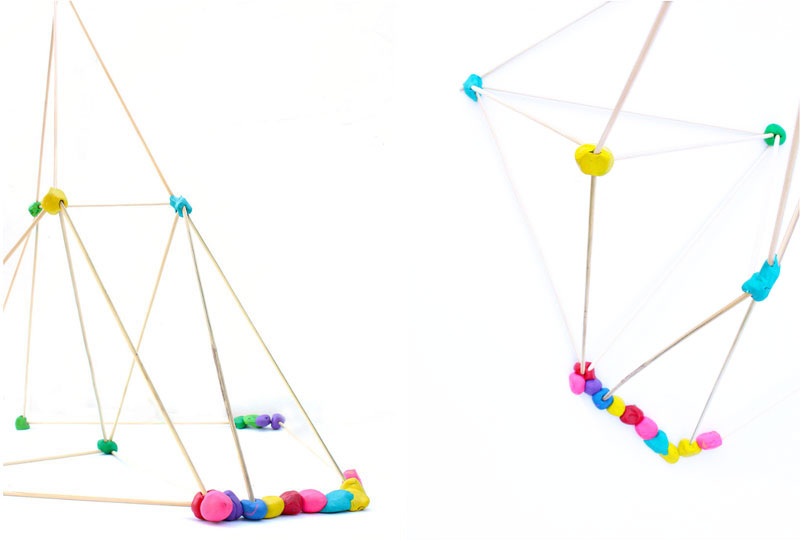
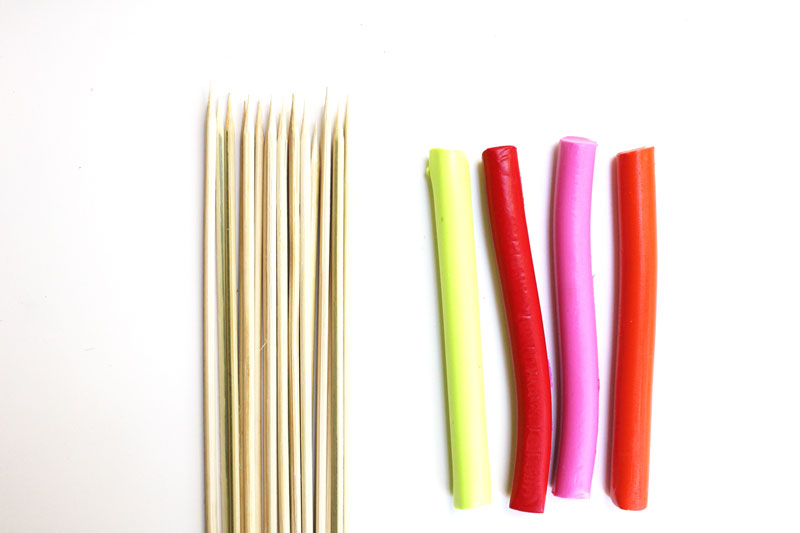 Materials
Materials 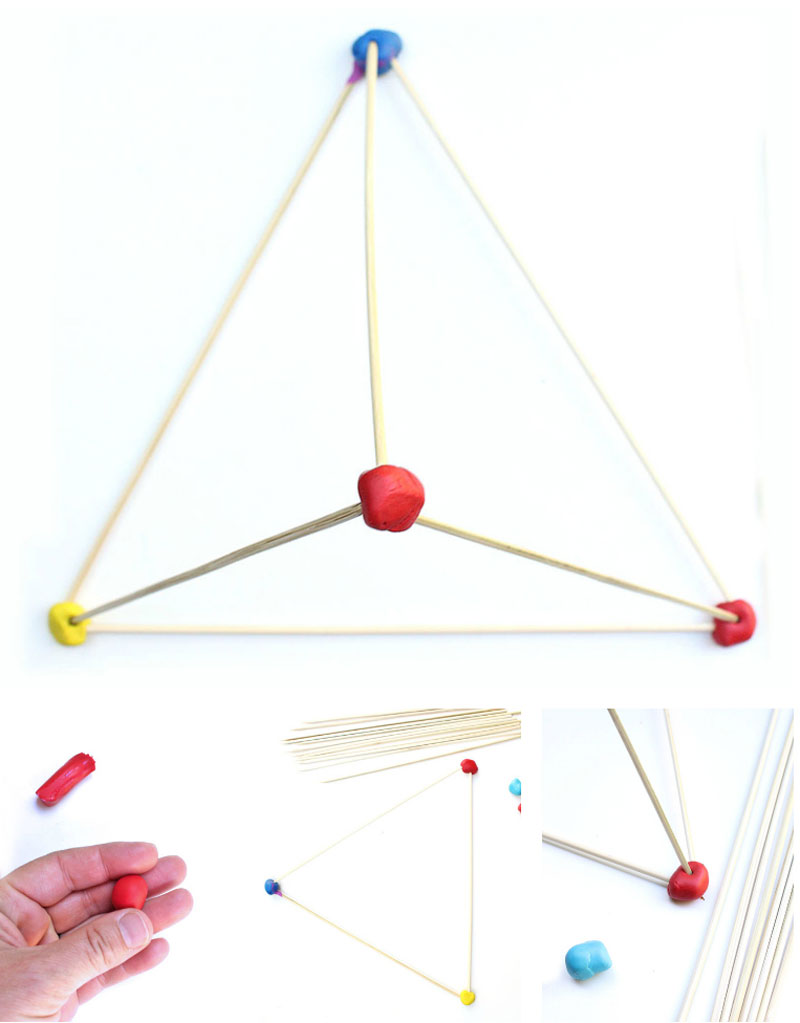
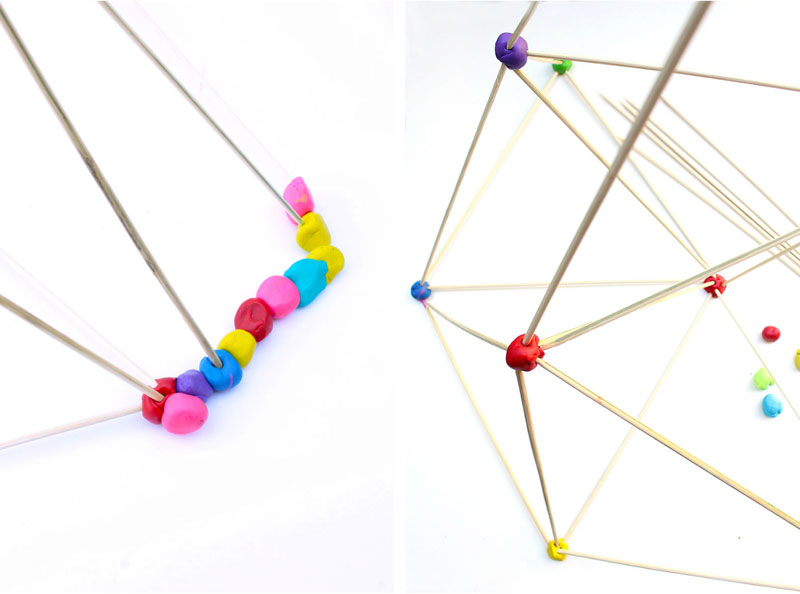
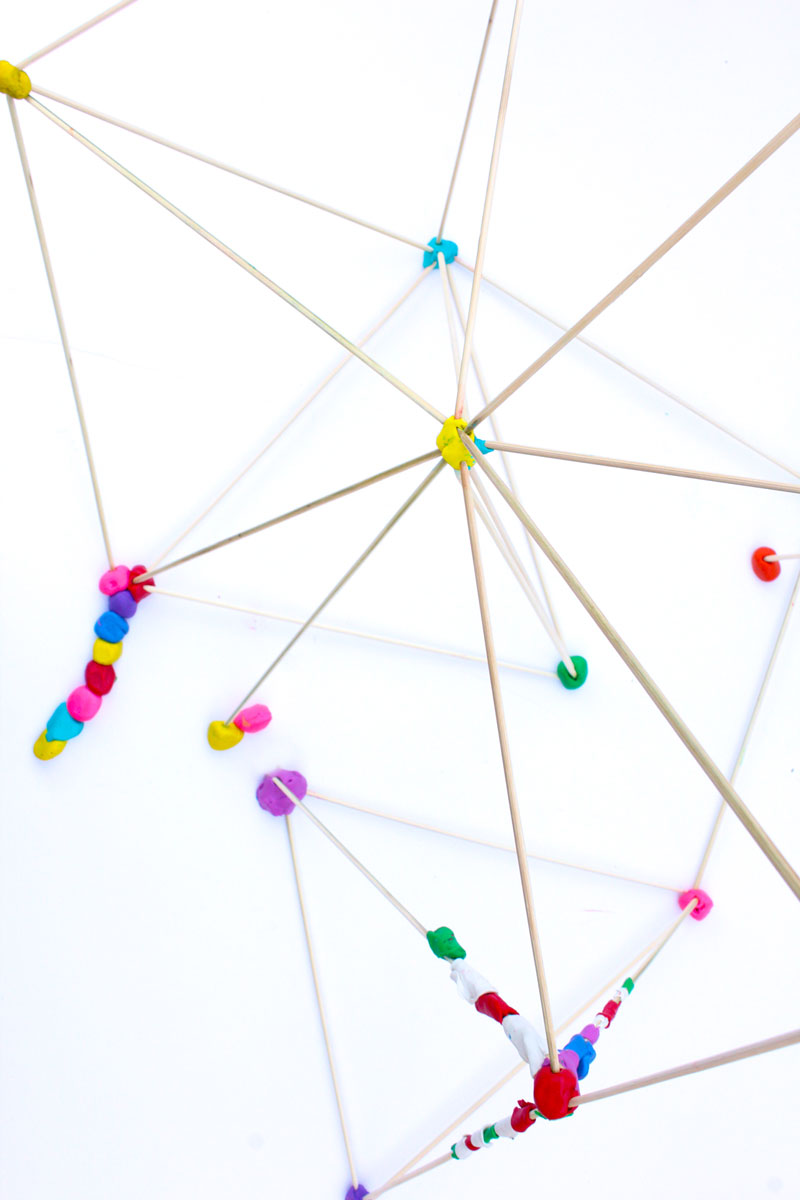
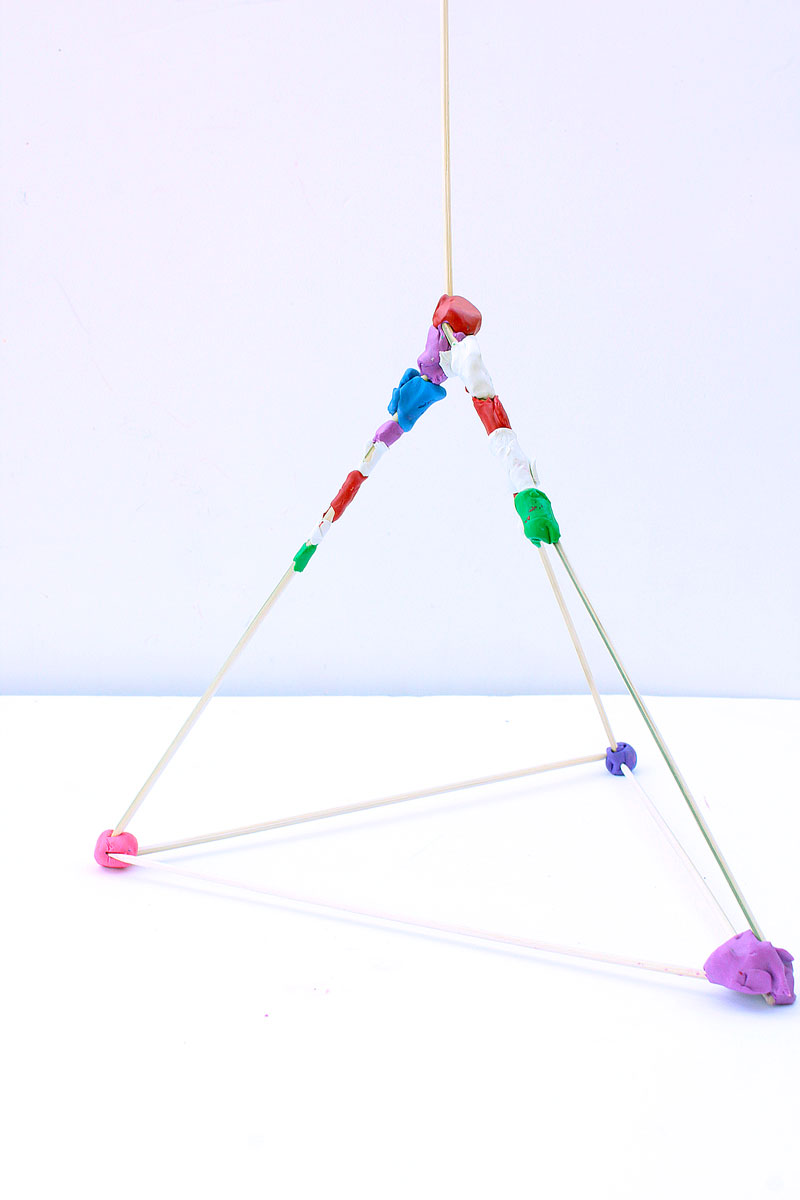
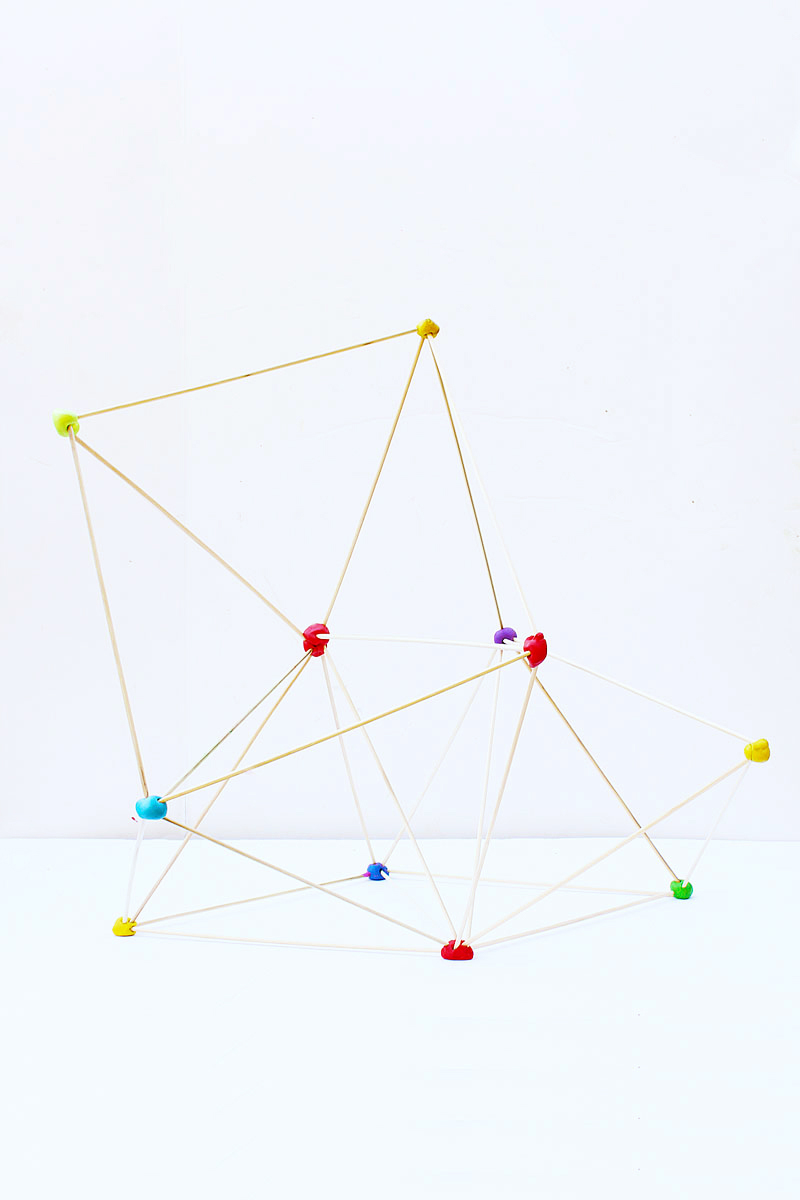
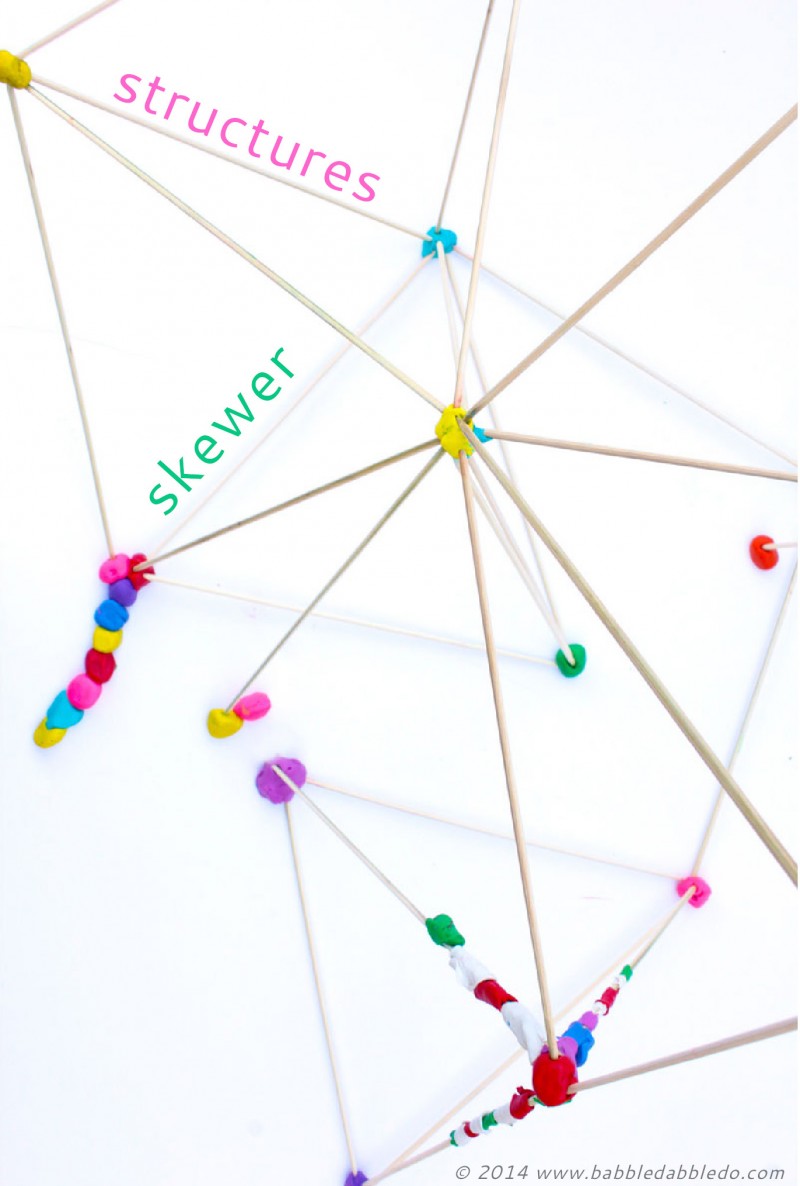
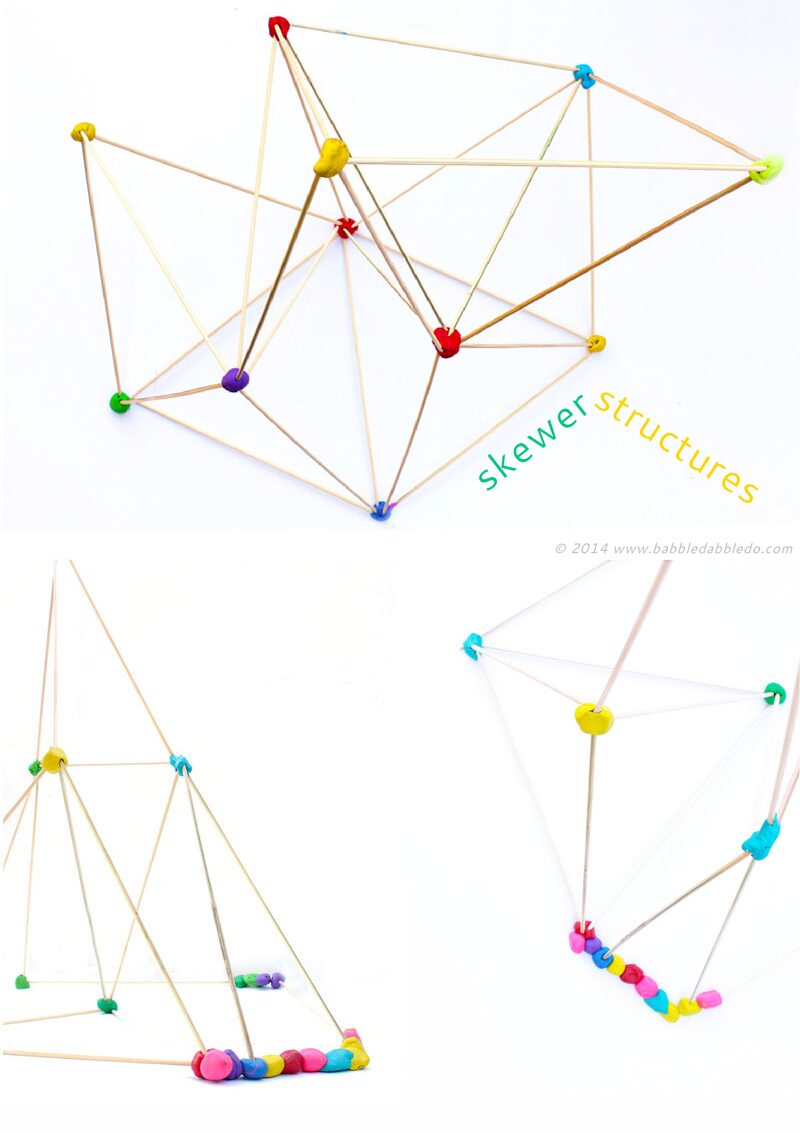
We are so going to try this! What fun!
Yay! They are easy and fun!